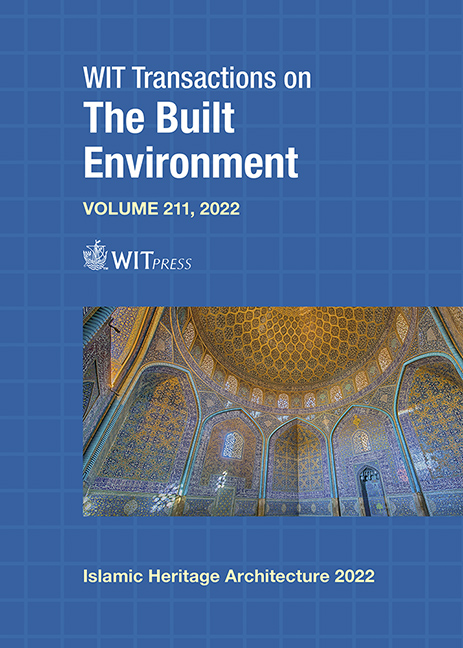ARCHITECTURE AND PRIVACY IN ISLAM: AN ANALYTICAL REVIEW
Price
Free (open access)
Transaction
Volume
211
Pages
11
Page Range
129 - 139
Published
2022
Paper DOI
10.2495/IHA220101
Copyright
Author(s)
HANA ALJAWDER, HALA A. EL-WAKEEL
Abstract
The visual privacy and levels of daylight have been a great concern for traditional Islamic architecture; therefore the design of mashrabiya was an efficient solution in previous times. However, changes occurring in contemporary Islamic architecture because of socio-economic changes and with the introduction of new building systems and new materials nowadays has resulted in the disappearance of this design element from the façades of current houses. This study aims to discuss different conceptions and meanings of privacy throughout literature, emphasising privacy in architecture. The study follows an analytical review design, where information is collected through different literary studies. The review of Islamic literature has indicated the importance of visual privacy for the occupants of homes and addressed a religious dimension that should be considered. This factor has an influence on the appearance of the home façade in traditional Islamic architecture. The mashrabiya/rawshan was a façade treatment for a house of traditional Islamic architecture to achieve visual privacy and daylight. This indicated that the Muslim architects of these houses were aware of the importance of both visual privacy and daylight. The study is useful in providing different aspects of the architecture designs in Muslim houses.
Keywords
architecture, Islam, mashrabiya, visual privacy




